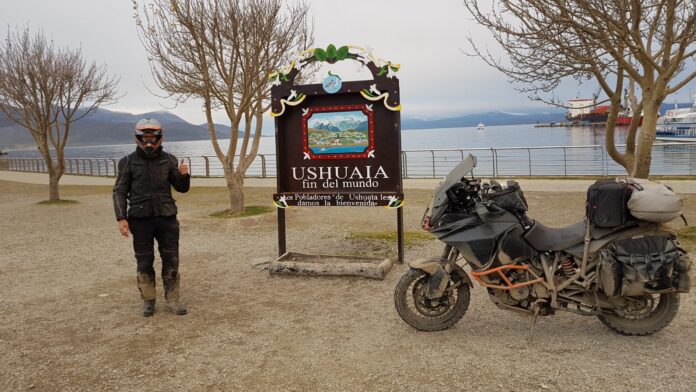Europe has been my riding home for years, but I always imagined riding my motorcycle elsewhere.
During the past seven years, I took the plunge and biked from Sydney to Greece. It was an amazing experience, one that I would recommend to anyone with a motorcycle license (and some endurance).
While most of Europe, Australia, and North America are motorcycle-friendly, there are a few things to be aware of before you hit the open road, like sketchy roads and crazy drivers. But what about other continents? Is it safe to ride a motorcycle in South America? What are the roads like? And most importantly, what should you know before you go? Here are some tips, based on my experiences.
Photo: Paolo
Beware of cities
Cities are where the real danger is. Aside from the traffic congestion and road hazards, some cities in South America have the reputation for being unsafe. Despite the apparent facade of beauty and grandness, some cities are completely unfit for motorcycles. Try to avoid traffic filtering or any illegal maneuver, as a lot of drivers on the road may not have insurance or even driver’s licenses. Try not to leave your bike parked on the street in the same spot for multiple days, especially overnight. You don’t want to attract too much attention. You should try to find motorcycle-friendly accommodations while passing through cities, as the owner/manager could advise you what are the do’s and don’ts in that particular area. It’s always better to have the opinion of a local. For a list of motorcycle-friendly accommodations please refer to this article too.
Avoid riding at night
Night riding is dangerous due to lack of visibility on the road. Mix in potholes, wildlife and reckless driving with low light, and the danger increases. Unless it’s necessary, try to avoid the darkness.
Not only is night riding more dangerous, you also miss out on the joys of sightseeing. Riding at night is a tunnel-vision-like activity that’s restricted by your headlight—that cuts down on the fun, a lot.
Photo: Paolo
Don’t trust your GPS
Unlike riding in Europe, North America, and Australia, you can’t trust your GPS when you’re riding in Latin America. Tracks may be closed or non existent. Road conditions may also vary, too. Construction zones (especially new ones) and detours are also not mapped and, considering the number of earthquakes that are happening all along the continent, you cannot be 100 percent sure that the road that you picked on your GPS may be available. It’s always better to cross-reference with Google Satellite view and Google Maps, to see if there are any alternatives, or if the road is there. Also, you should check with local authorities for road conditions as they may vary. For instance, this is a good website, made available by the local government, to keep in mind while traveling through unpredictable Peru.
Get your Whatsapp groups going
It can be scary out there on the open road, especially in a foreign (and maybe slightly sketchy) location. Fortunately, you are not alone. One thing to know about South America is that there are thousands of motorcyclists willing to help, spread across the continent.
There are WhatsApp groups specifically dedicated to riders and overlanders that have assisted hundreds of travelers in need. Whether you are riding into a big city or you got stuck in a small town with a mechanical problem, these online groups of “moteros” will find a way to help you and sometimes even host you during your stay in their area. You can ask about how to join these kinds of groups in the first motorcycle hostel/club in any part of the continent.
Photo: Paolo
Learn basic Spanish
I know that it’s hard to learn something new, but it’s very rewarding to learn a bit of Spanish while traveling to some of the world’s best motorcycling countries.
All Latin American countries speak Spanish except Brazil, so you may interact with many people who only speak Castillan. It shows your appreciation when you try to speak the local language and, as South Americans are already welcoming people, speaking their language definitely turns the hospitality up a notch. For these reasons, I would recommend taking some basic Spanish classes before going and then hitting the road for your full immersion in the culture. I promise you won’t regret it.
South America is an amazing continent with so much to offer tourists and expats alike. Whether you’re looking for extreme riding, stunning natural landscapes, or historical ruins, there’s something for everyone in South America.
Have I missed anything? Let me know in the comments below!












